Why Aerate your lawn?
Over time your soil can become compacted. This squashes your lawns roots and starves them of water, air and nutrients. This in turn increases the likelihood of disease, insects, weeds and drought damage. Let your lawn breathe and drink more easily by aerating it.
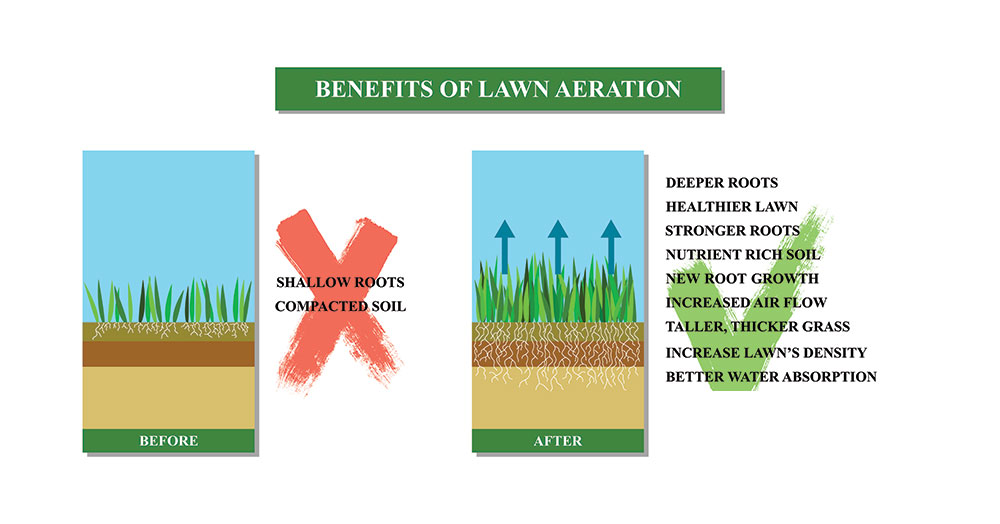
- Encourages growth of new roots
- Improves the level of water intake
- Improves the level of air intake
- Increases the level of nutrient intake
- Reduces levels of thatch
- Reduces chance of disease
- Reduced chance of weeds
- Reduced chance of insects
- Improves drought tolerance
- Improves drainage
- Increase in oxygen production
- Healthier air for you, the kids and pets
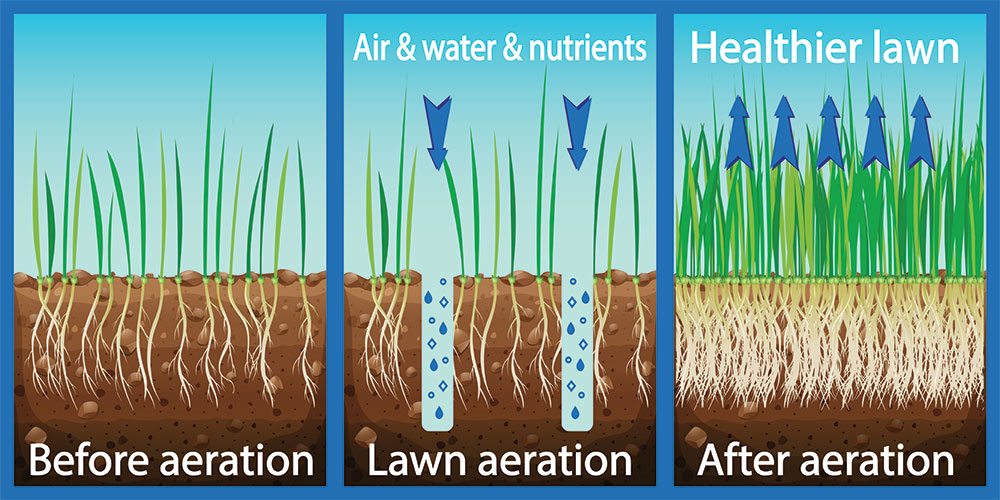
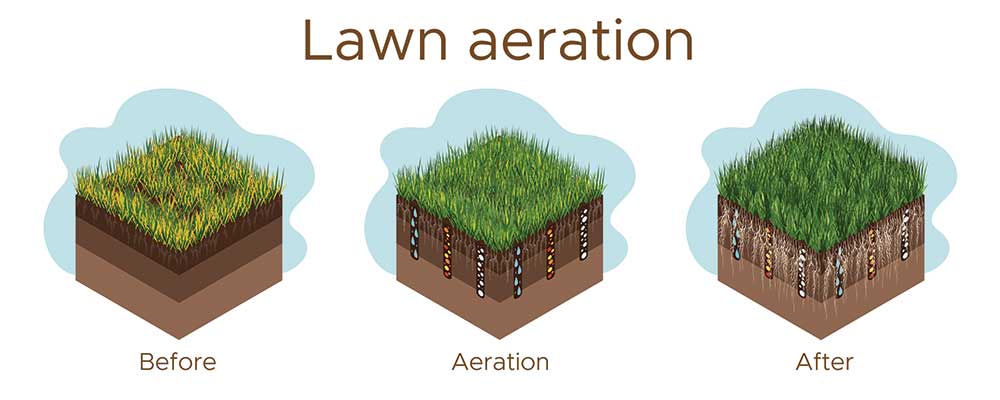
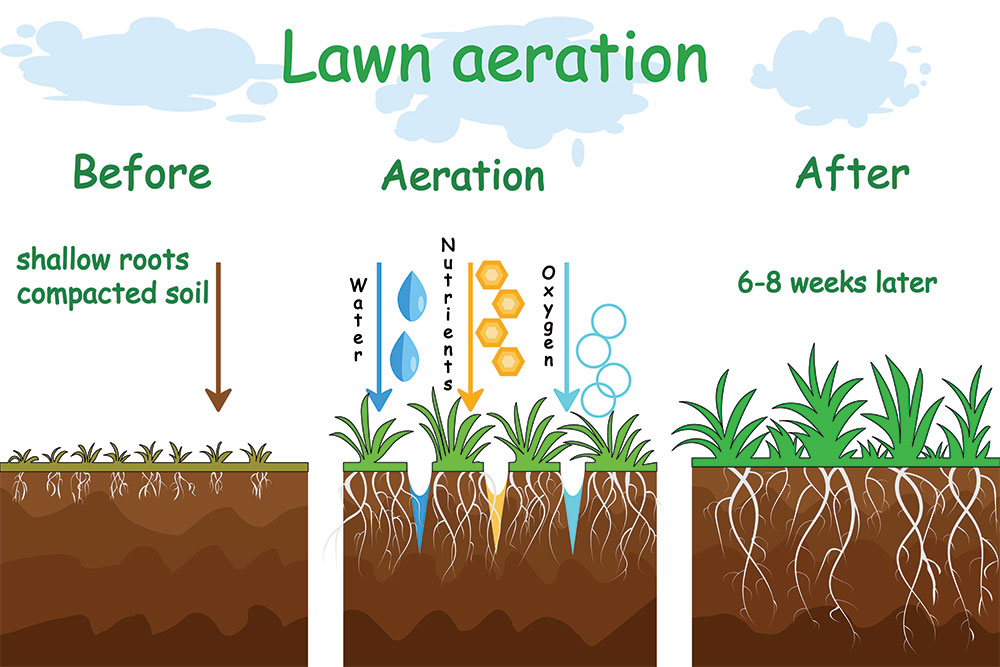
What is Lawn Aeration?
Holes or cores/plugs are created in the soil to allow more air, water and nutrients to get to the roots. This creates a much healthier and stronger, better looking lawn which is better at resisting disease, weeds, insects and drought.
How to Aerate your Lawn
Spiking – Holes can be created by using a standard garden fork, lawn aerator roller or lawn aerating shoes can be purchased where you just walk around on your lawn to create the holes in it.
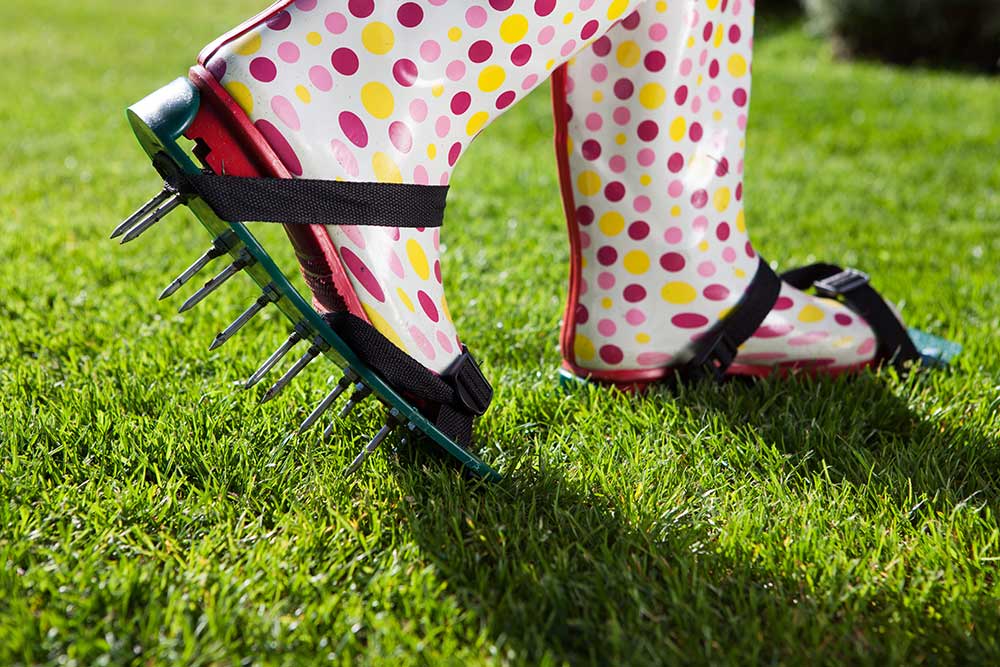
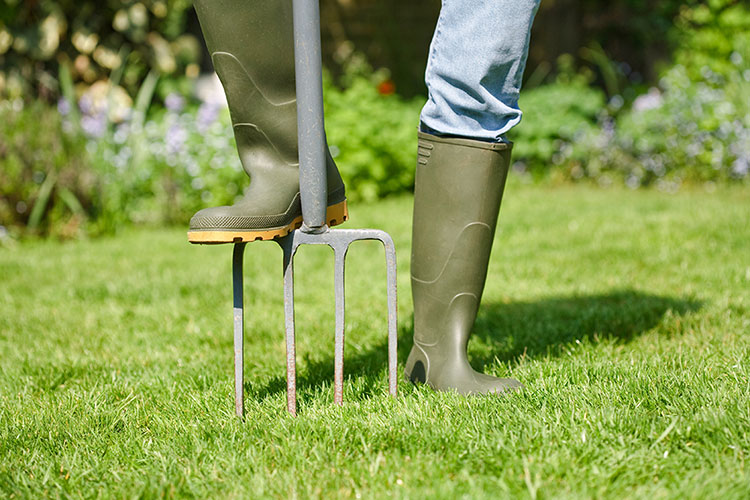
Coring/Plug removing – This can be done either by hand tools such as a coring fork or by mechanical tools such as a motorised lawn aerator. The motorised lawn aerator is the easiest method for any lawn of size and it is also the most effective and can be used in conjunction with the other methods for the more hard to reach areas. With the motorised lawn aerator you walk behind it just like with a lawn mower and it quickly and efficiently puts holes into the lawn.
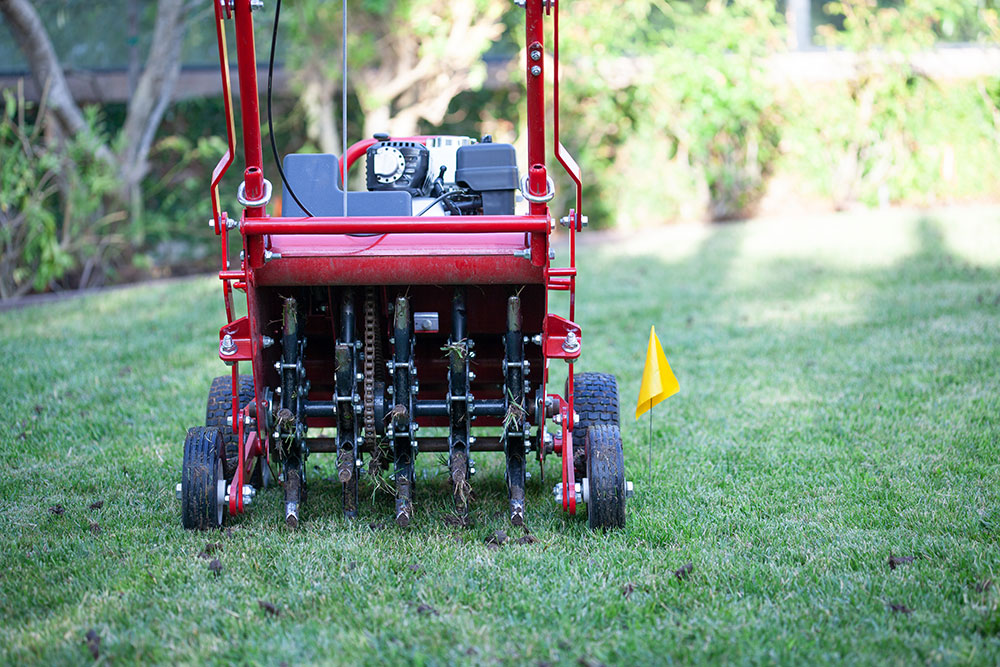
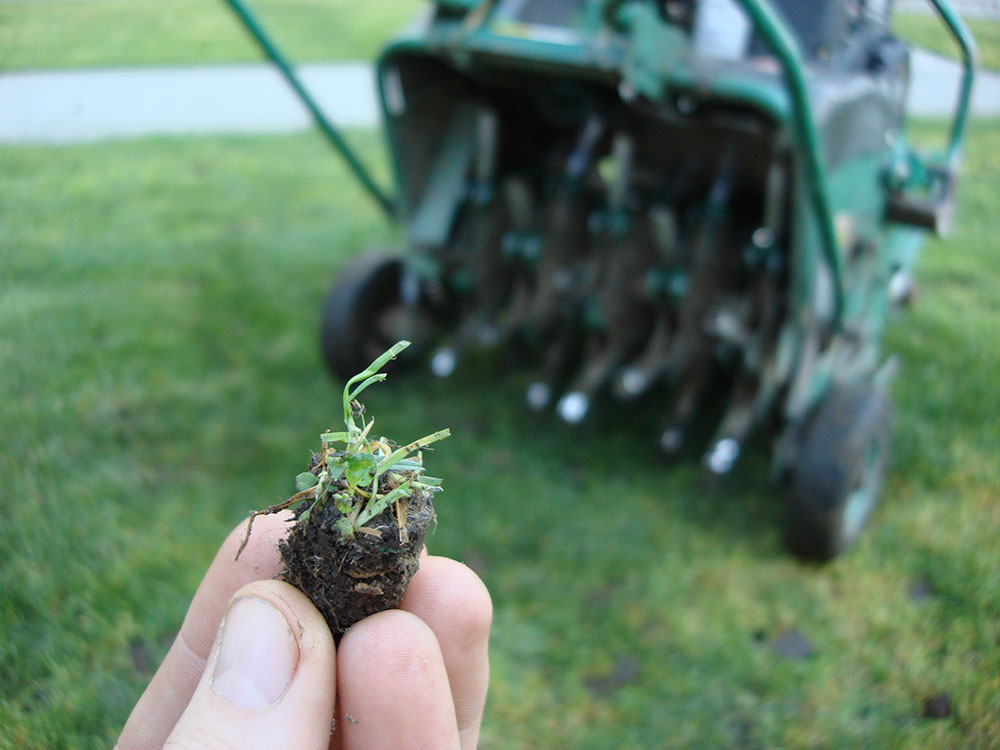
Before Aerating Your Lawn
Make sure you know the area well where you are aerating because you don’t want to hit any underground services such as underground pipes or irrigation system.
When to aerate your lawn
It is a good idea to aerate your lawn at least once a year, but twice is more beneficial. Early Spring, late Summer or early Autumn are good times to aerate your lawn. It is not a good idea to aerate when the ground is too dry as you will find it much harder. Also don’t aerate when the soil is too wet as as the cores can get stuck in the machine. Slightly moist is the perfect condition for lawn aeration as it allows you to easily spike the lawn or to use the mechanical lawn aerator more efficiently.
Preparation before lawn aerating
It is best to mow your lawn fairly short and rake any thatch away. You will be able to tell if there is too much thatch in your lawn as it will have a spongy feel when walking on it. You need to collect your grass clippings to make your lawn as clear from debris as possible.
Make sure that you lawn and soil is slightly moist, if it isn’t then give it a good water first.
Using a garden fork for lawn aeration
Push the fork into the soil 100-150mm or more and then move the fork back and forth to create and make the holes bigger. Also break up the soil with the fork. Then do the same thing at a spacing of 100-150mm or less and continue until you have aerated the whole area.
Using lawn aerating shoes
Strap the aerating shoes on and just walk around your lawn ensuring to get a good even coverage. For the more compacted areas you can focus a bit more on those areas.
Using a Motorised Lawn Aerator
Always be very careful when using any automatic machinery and follow the manufacturers instructions. Ensure that the area that you are going to aerate is clear of any debris such as rocks, tree roots, stones, branches, toys.
Aerate the whole of the area that needs doing, being careful not to rip the lawn by turning the aerator machine during use.
After aerating your lawn
You can leave the cores on your lawn as they will disperse by themselves back into the lawn by your future lawn mowing, wear and the weather.
It is now important to resume your lawn maintenance schedule, so keep on top of your mowing, watering and fertilising.
Now is also a great time to test the pH of your soil because if you find that it is not reading between 6 and 7 then you can now add the necessary elements to balance it out as the holes are already there. You can use Gypsum if the soil has too much clay in it and you wish to break it down. If the pH is too low then adding lime will help to raise it and neutralise acidic soil. Always make sure that always water in well after adding anything to your soil.
Now is also a great time to do any levelling that may be required through doing some light top dressing. The sand will go into the holes and provide longer ability for moisture air and nutrients to get down to the roots thus increase plant health.
